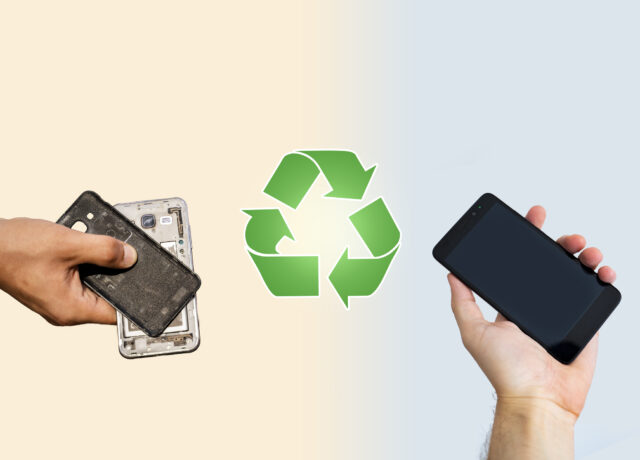The Benefits of Upgrading Your Tech

Keeping up with the ever-changing tech landscape can be challenging, with frequent new device releases, various repair and recycling options, and upgraded features in each model. Whether you use your device for personal or business purposes, staying up to date and upgrading when possible offers several advantages.
In this blog, we’ll look at why people upgrade their devices so frequently, along with useful insights on when to upgrade and how to handle your old devices.
Why Upgrading Your Device is More Important Than You Think
Leading brands such as Apple, Samsung, and Google constantly compete to release the most innovative, practical, and advanced devices, often making it feel like there’s a never-ending stream of new tech announcements. So far in 2025, we’ve seen the launch of the Samsung Galaxy S25 series, Nintendo has confirmed the release of the Nintendo Switch 2 later this year, and, as always, speculation is rife about the next iPhone.
If your current device is working well, you might not see the need to upgrade, especially if you have set up organisational systems that suit your daily routine. However, regular upgrades are essential for maintaining top-tier performance, security, and efficiency. Newer devices feature faster processors, improved battery life, and access to cutting-edge advancements such as AI and automation.
When it comes to business mobile recycling, older devices are more vulnerable to cyber threats due to outdated software and unsupported operating systems, which can pose a great risk to the security of your tech.

Signs It’s Time to Upgrade Your Phone, Tablet, or Laptop
Some signs are obvious, such as visible cracks or screen issues. In these cases, you may benefit from our ‘sell my broken phone’ service (note: the device must power on to be eligible).
Here are some other clear indicators that it might be time to upgrade:
- Slow Performance: If your device is lagging, crashing, or struggling to keep up with modern applications, it may be time for an upgrade.
- Lack of Software Updates: If the device’s original manufacturer stops providing updates, your device can become at risk to security issues or compatibility problems.
- Damaged or Malfunctioning Hardware: Cracked screens, faulty batteries, and non-responsive buttons are all signs.
- Compatibility Issues: If your device no longer supports the latest apps or tools, you’re only limiting yourself in what your tech can do.
- Frequent Repairs: If you’re constantly fixing your device, upgrading might be the more cost-effective choice in the long term.

How Often Should You Upgrade Your Devices?
How often you should upgrade is somewhat dependent on the person, the device, and what it is used for. For example, your mobile phone may well be carried around everywhere you go, for things like mobile banking, texts and calls, and even as a payment method. If you’re using your device on a daily basis for multiple different purposes, then upgrade every three to five years to ensure that you’re accessing the best possible opportunities.
Alternatively, if you’re the owner of an iPad, for instance, and you only use it on occasion, perhaps for things like streaming movies or TV shows, or mobile gaming, then leaving it a bit longer makes more sense. Apple devices, for instance, tend to have updates available for approximately seven years before they become obsolete, but this may vary depending on the brand.
Assess how much the device is being used, whether it has any noticeable flaws in terms of performance, and what your budget is for a new device, when considering an upgrade. Remember, with a device recycling program like ours, saving up for new tech items is even easier.

Upgrading Responsibly
Upgrading to a new device doesn’t mean that your old one should go to waste. Proper disposal and recycling of old tech is crucial for reducing electronic waste and minimising impact on the environment. electronic waste is one of the most important environmental concerns, and recycling helps devices stay out of overfilled landfill sites.
Moreover, many components in devices, such as the lithium of batteries and rare metals in circuit boards, can be reused, which reduces the need for new resource extraction. When sent to landfill, the harmful substances found in electronics like lead and mercury can leak into the environment and into water sources, presenting dangerous pollution issues.
How to Recycle Your Old Device Responsibly
When it’s time to upgrade, be sure to use a trusted and reliable recycling provider, such as Mazuma. In addition to our thousands of positive reviews, we also offer hassle-free processes with guaranteed payments, meaning that what you’re quoted, is what you’ll get.

